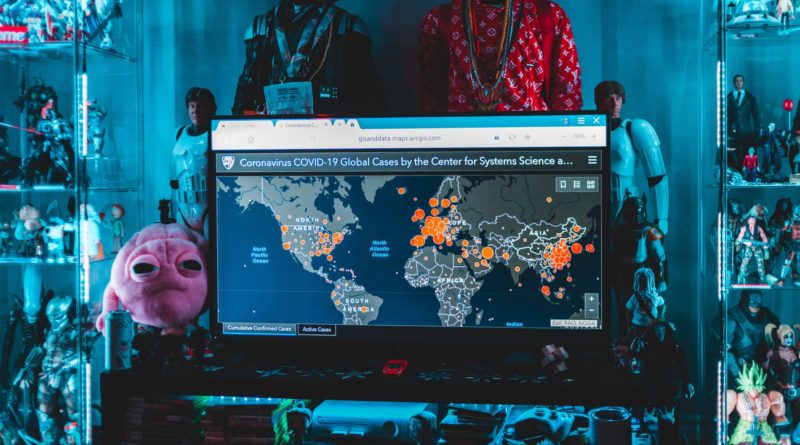Covid-19 variants: Five things to know about how coronavirus is evolving
The Sars-CoV-2 virus is changing in ways that are making it more transmissible, increasing the severity of disease it causes and allowing it to infect people who should have immunity. These variants are causing concern among global health experts, particularly as there are signs that some vaccines may be less effective against them.
Here are five things to know about the new Covid-19 variants:
- The virus is always changing but occasionally makes an evolutionary leap
Whenever the Covid-19 virus infects someone, it hijacks the biological machinery of their cells to create copies of itself. Every so often the genetic material the virus carries is copied incorrectly, producing what is known as a mutation. Most of the viruses with mutations die out, but some go onto infect other cells in the body and eventually other people.
‘The virus is constantly evolving, so we expect to see an accumulation of changes over time,’ said Dr Erik Volz, an epidemiologist who studies the evolution of infectious diseases at Imperial College London in the UK.
Occasionally, one of these genetic errors can lead to a change that is advantageous to the virus, such as enabling it to get into cells more easily, producing more copies of itself or allowing it to evade the immune response of people it infects.
Early in the pandemic, one such mutation caused the Covid-19 virus to become more transmissible by increasing how much virus was produced by people it infected, according to research by Dr Volz and his colleagues. The change also seems to have led the virus to infect larger numbers of younger people than it had previously.
‘We don’t know where this first arose, but it seems there were multiple occurrences of it in China and Europe,’ said Dr Volz. When this version of the virus was noticed in March 2020, ‘it was already spreading rapidly around the world,’ he added.
By June, it had become the dominant variant of the virus in the pandemic. What had taken place in the virus’s genome had made it evolutionarily fitter than the earlier form of SARS-CoV-2.
A few months later, the Covid-19 virus underwent even more dramatic changes that are having an ongoing effect on the course of the pandemic. These were new variants showing not just a single change to the spike protein, but multiple important mutations. The first of these to be detected was the B117 variant identified in samples taken in Kent, south east England, in December 2020. This new version of the virus had accumulated 17 separate mutations in a very short period of time and increased the speed with which it spread.
‘(The) appearance of the new variants were a bit surprising,’ said Dr Volz. ‘We weren’t expecting B117 to pop up with such a big step change in its transmissibility.’
- These are variants of SARs-CoV-2, not new strains
Shortly after B117 was detected, another version of the virus with a couple of similar mutations – but also some important distinct ones – was spotted spreading in South Africa and then another was found to be spreading in Brazil. These would become known as B1.351 and P1 respectively. Both have mutations that allow them to reinfect people who should have immunity after a previous infection or vaccination.
While some news reports have described these new versions of the Covid-19 virus as ‘strains’, it is more accurate to describe them as ‘variants’, says Dr Volz. Part of the problem is that a virus ‘strain’ does not have a widely accepted definition.
A variant, by comparison, is usually defined as a version of the virus that has a genetic change that differs from the original sequence when Covid-19 was identified. When it picks up a change or set of changes that form a new branch of its epidemiological family tree, this becomes known as a lineage. The word ‘strain’ is reserved for a virus that has very different properties, adds Dr Volz, such as a significant difference in the proteins it carries or changes in its behaviour.
Currently, the variants that are causing most concern around the world are still essentially the same virus and cause the same disease, but as SARS-CoV-2 evolves it could eventually change so much compared to the original virus it may come to be regarded as a new strain.
‘This suggests there is some convergent evolution taking place – that they might be climbing the same (evolutionary) fitness hill.’ Dr Erik Volz, Imperial College London, UK
- Chronic infection cases and higher levels of population immunity may have enabled the virus to evolve
Exactly how these variants have appeared is still unclear, but scientists have some clues. While monitoring people suffering from unusually long lasting Covid-19 infections – known as chronic infections – researchers have seen the virus pick up multiple changes within individual patients, including some of the mutations seen in the new variants.
The virus was able to continue replicating within their bodies for many months, picking up mutations as it did so. There are also some indications that the virus might be learning to evade certain treatments, such convalescent plasma, where antibodies are extracted from the blood of people who’ve recovered from Covid-19 and given to patients who are seriously ill. ‘That is the sort of situation we know can produce these hyper-mutated viruses as the virus would be optimising its replication within a host.’
Variants like B117 may have picked up multiple mutations in a chronically ill patient in this way and then escaped out into the community by infecting someone else, adds Dr Volz.
What has caught his attention, along with that of other virologists and epidemiologists, is that the variants appear to have picked some of the same mutations in different parts of the world at around the same time. All of the variants show multiple mutations to the spike protein, a molecule that studs the oily surface of the virus. It plays a key role in helping the virus get into cells, and is also the part being targeted by most of the vaccines.
Increasing levels of immunity in some countries might be causing these changes to occur independently on multiple occasions, explains Dr Volz. Natural selection will cause variants that are better adapted to evade people’s immunity to become more common.
- Sequencing has played a crucial role in tracking new variants
One key advantage during the Covid-19 pandemic compared to past pandemics is the level of scientific scrutiny that has been brought to bear on the virus thanks to genetic sequencing. Sequencing of the viral genetic code in samples taken from patients has allowed experts to track the virus as it has spread and to quickly spot new variants as they emerge.
‘We’ve never had a genomic surveillance system like this,’ said Dr Volz. ‘I mean, a year ago, I think it would have been science fiction.’
This rapid detection has allowed health authorities and governments to take rapid steps to control the spread of the variants with lockdown measures and travel restrictions, for example. ‘The idea that within a month of a variant starting to circulate, it can be detected and then lead to a change in policy – that’s really unprecedented,’ said Dr Volz.
But despite this, it is also clear that the virus is still moving quicker than the authorities are able to respond. The B117 variant has now been reported in around 114 countries while B1.351 has been detected in 67 countries and P1 in 36 countries. And they might all be more widespread still as many countries do not have rigorous surveillance and sequencing available.
Because of this, variants of concern may be spreading unnoticed, says Dr Volz.
Researchers taking part in the MOOD project used anonymised location data taken from Twitter and mobile phones to track the travel patterns from Britain, South Africa and Brazil between October and December 2020, the time when each of the variants of concern are thought to have begun spreading. They found a strong correlation between destinations with the most travellers from each of these three countries and the locations where the variants were subsequently found.
‘If you want to control the spread of these variants, countries need to closely monitor the genomic change of the virus,’ said Dr Shengjie Lai, a senior research fellow at the University of Southampton, UK, who led the study.
- Vaccines are already being changed to deal with variants
With some of the Covid-19 vaccines already showing signs of being less effective against the B1.351 and the P1 variants, some manufacturers have begun developing booster shots that will give extra immunity against these versions of the virus.
But it is likely vaccines will have to be continually updated as the virus evolves. Already there are some cases in Britain of the B117 variant picking up the mutation that is thought to have been largely responsible for the ability of the virus to be resistant to antibodies in P1 and B1.351. There are other variants spreading in California, US, for example, that carry mutations that could lead to problems in the future by causing reinfections.
‘There is a growing list of variants under investigation and it is likely some of these will become variants of concern,’ said Dr Volz. ‘The virus has demonstrated it has the ability to become more transmissible and to escape from immunity. With a pretty large proportion of the population with immunity either from infection or vaccines, there’s going to be much more pressure for escape variants to appear.’
His own research group has been modelling the evolution of SARS-CoV-2 to help others in the CoroNAb project generate antiviral treatments against the coronavirus. If the virus changes enough to be able to avoid the immune systems of those who have received vaccines, anti-viral treatments could be a crucial way of controlling the disease until new vaccines can be developed.
‘We can also use our travel data to see how effective certain intervention measures are,’ added Dr Lai. ‘It could help governments find the best way of not only controlling new Covid-19 variants, but other diseases in the future too.’
The MOOD and CoroNAb projects are funded by the EU. If you liked this article, please consider sharing it on social media.
This post Covid-19 variants: Five things to know about how coronavirus is evolving was originally published on Horizon: the EU Research & Innovation magazine | European Commission.
Author: Richard Gray
Image credit: Erik Mclean / Unsplash



